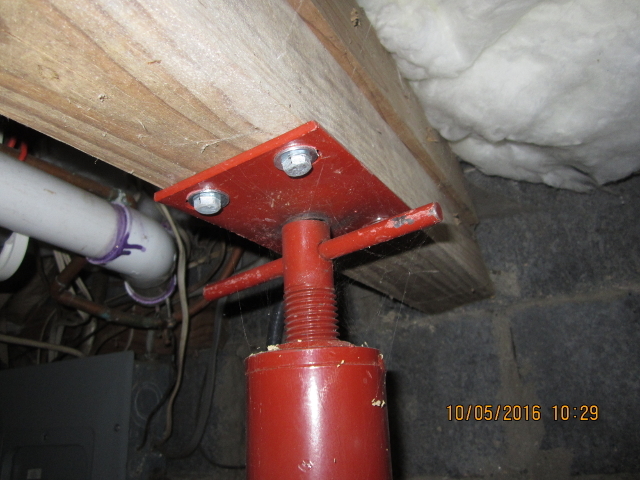SLTA
Structural
- Aug 11, 2008
- 1,641
I spec'd out a retrofit adjustable locking column from Akron Products ( for a residential renovation job recently. I've found these columns to be great replacements for old rusted-out jack posts. The contractor, bless his heart, didn't give his guys my details on how to install the blasted things, so they put them in upside down and hence, the adjustable portion is at the top of the column instead of locked into place in concrete at the base.
The columns were installed appropriately otherwise, so now I'm trying to figure out what the contractor can put on the threads of the adjustable portion to lock the column height into place. I'd rather not have them tear out the columns for a variety of reasons. So, does anyone have a suggestion? I was thinking something like the J-B SteelStik Epoxy Putty or the J-B Weld, and having them smear it all around where the threads meet the column. Anyone have a preferred product, or experience with the J-B products?
Thanks!

Please remember: we're not all guys!
The columns were installed appropriately otherwise, so now I'm trying to figure out what the contractor can put on the threads of the adjustable portion to lock the column height into place. I'd rather not have them tear out the columns for a variety of reasons. So, does anyone have a suggestion? I was thinking something like the J-B SteelStik Epoxy Putty or the J-B Weld, and having them smear it all around where the threads meet the column. Anyone have a preferred product, or experience with the J-B products?
Thanks!

Please remember: we're not all guys!

![[idea] [idea] [idea]](/data/assets/smilies/idea.gif)
![[r2d2] [r2d2] [r2d2]](/data/assets/smilies/r2d2.gif)